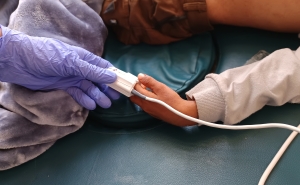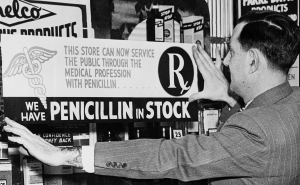Heroin Users Aware of Fentanyl, But At High Risk of Overdosing
Survey of users highlights need for more proactive overdose-prevention strategies
Most heroin users in Baltimore, a city heavily affected by the opioid epidemic, recognize that the heroin they buy is now almost always laced with the highly dangerous synthetic opioid fentanyl, according to a new study led by researchers at the Johns Hopkins Bloomberg School of Public Health.
At the same time, the researchers found that a majority of these users are not adequately prepared to prevent or treat fentanyl-related overdoses because they report injecting alone or without having the overdose antidote naloxone on hand.
The findings, published February 15 in the journal Substance Use & Misuse, suggest overall that there remains a strong need for public health policies and programs that encourage users not to inject alone, to keep naloxone on hand and to use naloxone appropriately to treat overdoses.
“In many parts of the country fentanyl is now the major cause of all the death and despair arising from the opioid epidemic, and we have to reduce the barriers that prevent users from being prepared to treat fentanyl overdoses,” says study lead author Carl Latkin, PhD, professor and vice chair of the Department of Health, Behavior and Society at the Bloomberg School.
As part of a broader study aimed at reducing HIV and hepatitis C virus transmission from needle-sharing, Latkin and colleagues surveyed 316 people admitting recent illicit opioid use in Baltimore, a city with a large heroin trade and currently almost 1,000 annual opioid-overdose deaths. Of the 316 participants, who were surveyed in 2017-2018, 210 admitted recent use of injected opioids.
All of the 316 illicit opioid users had heard of fentanyl, and of these, a majority (56.2 percent) reported believing that “most” or “all” of the heroin in Baltimore is laced with it. An even larger majority (74.8 percent) reported being “quite a bit worried” or “very worried” about drug-using acquaintances overdosing on fentanyl.
Fentanyl is 30 to 50 times more potent by weight than heroin. It also can be synthesized more cheaply in a lab from widely available starting chemicals, whereas heroin requires a complicated chain of production originating with opium poppies. Although fentanyl is manufactured legally as a powerful, fast-acting painkiller, much of it is made in illicit labs in China and Mexico and is included in heroin to boost its potency.
Opioids are potentially fatal because, as a side effect, they suppress breathing, and fentanyl’s extreme potency makes the chance of fatal overdose higher than ever. Fentanyl and closely related synthetic opioids are now collectively the leading cause of drug overdose deaths in the U.S.—deaths that totaled more than 70,000 in 2017.
A large majority (65.8 percent) of survey respondents also reported receiving or having been prescribed naloxone, which blocks opioid-receptor activation in the brain and can reverse the effects of overdose and prevent death if administered in time. Many state and municipal governments, including Maryland’s and Baltimore’s, have tried to make naloxone more available to opioid users. However, a similarly large majority (64.6 percent) of the surveyed opioid users reported that they “never” or “rarely” carried naloxone (Narcan) when using, and only 12.5 percent of the 210 injected-opioid users said they had Narcan available “often” or “always” when injecting with others. About half (51.4 percent) of the injected-opioid users reported injecting “often” or “always” by themselves—a situation in which no one would be able to administer naloxone in case of overdose.
Although these results suggested that most users were concerned about, yet also distinctly underprepared for fentanyl overdoses, other responses indicated a general openness to overdose-prevention strategies. A majority of illicit opioid users (53.5 percent) agreed or strongly agreed that “I am going to need more training before I would feel confident to help someone who has overdosed,” and nearly half (47.2 percent) indicated that they were “very willing” to talk with people in their neighborhood about fentanyl.
Latkin and his colleagues concluded that more efforts are needed to train users in the use of naloxone, and to put the medication in the hands of others who are willing and able to use it in overdose situations. “A good first step was making naloxone available to users,” Latkin says. “Now we really need to get it to their social networks as well.”
The researchers also concluded that better efforts are needed to reduce the stigma of drug use, and in that way encourage users not to use alone and to discuss overdose risk and naloxone with other drug users as well and family and friends.
“Fentanyl and Drug Overdose: Perceptions of Fentanyl Risk, Overdose Risk Behaviors, and Opportunities for Intervention among People who use Opioids in Baltimore, USA” was written by Carl Latkin, Lauren Dayton, Melissa Davey-Rothwell, and Karin Tobin.
Funding was provided by the National Institutes of Health (DA022961, DA040488).
# # #
Media contacts for the Johns Hopkins Bloomberg School of Public Health: Barbara Benham at 410-614-6029 or bbenham1@jhu.edu and Robin Scullin at 410-955-7619 or rsculli1@jhu.edu.





